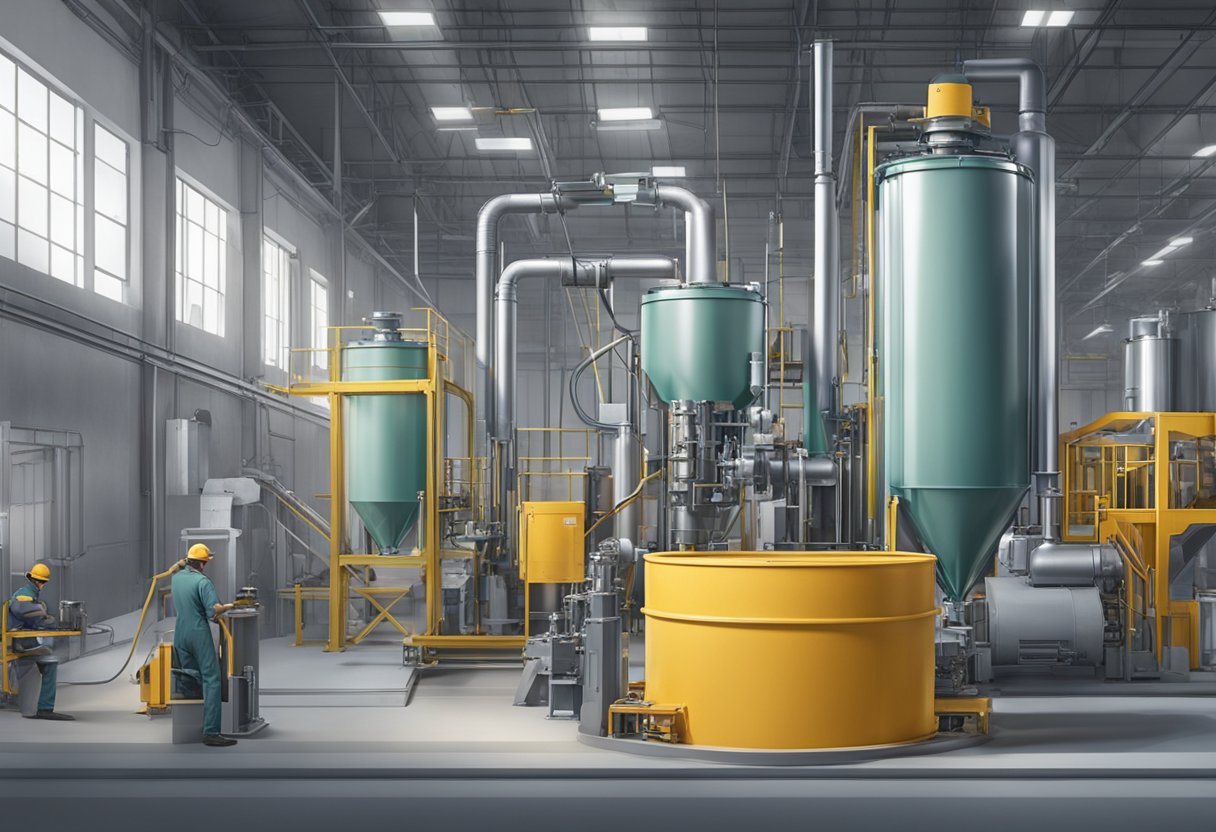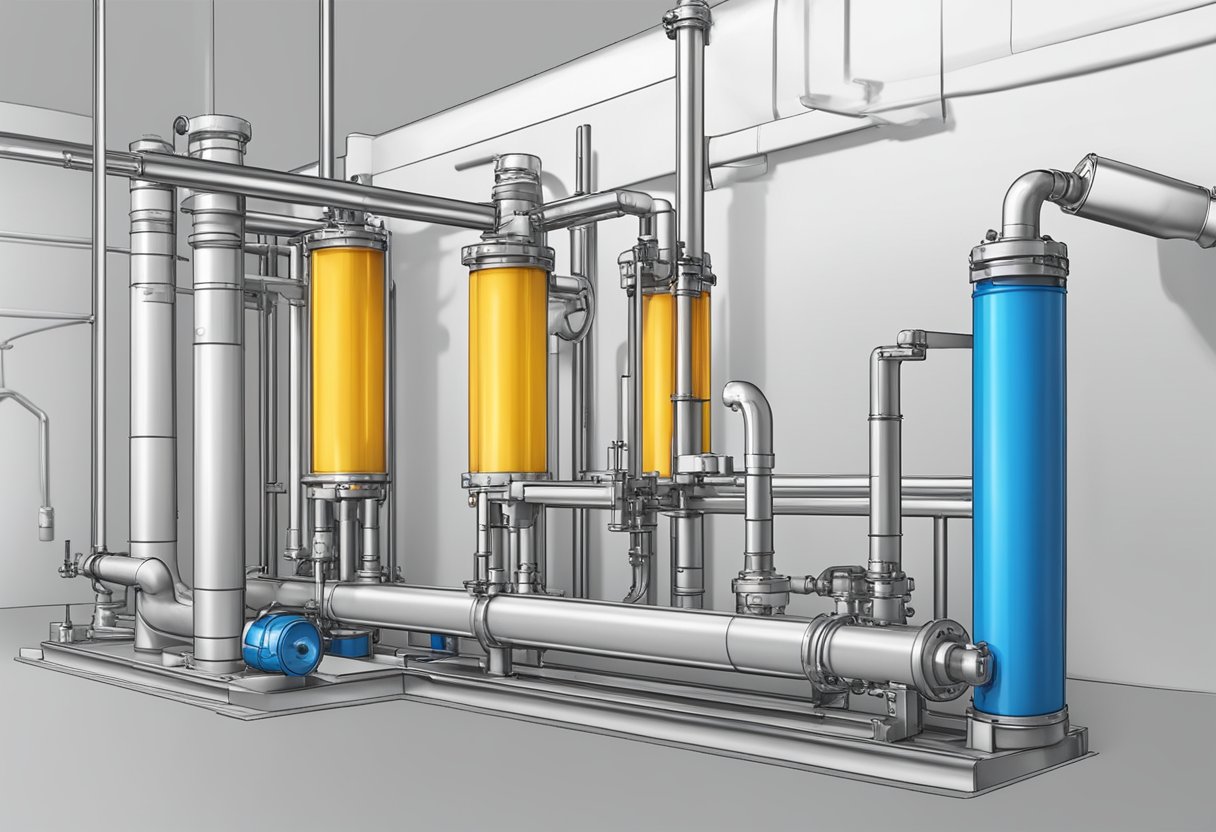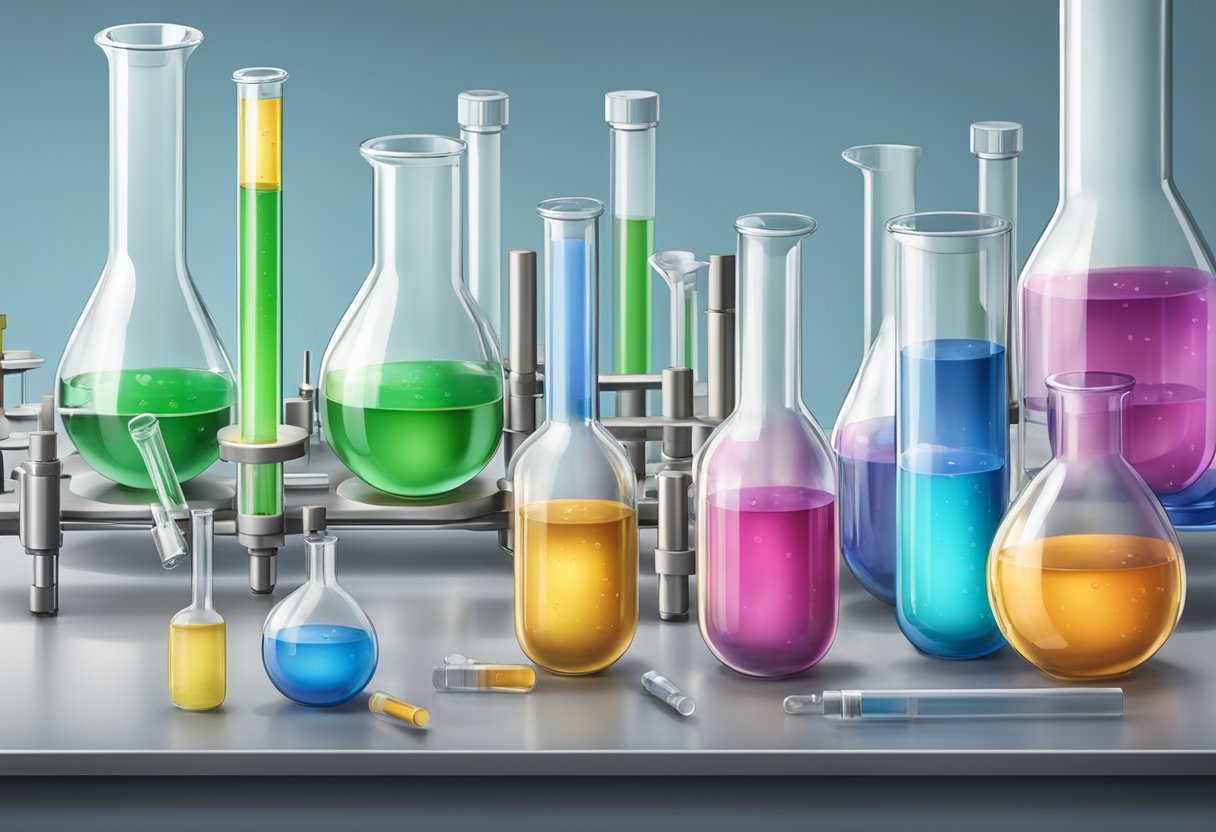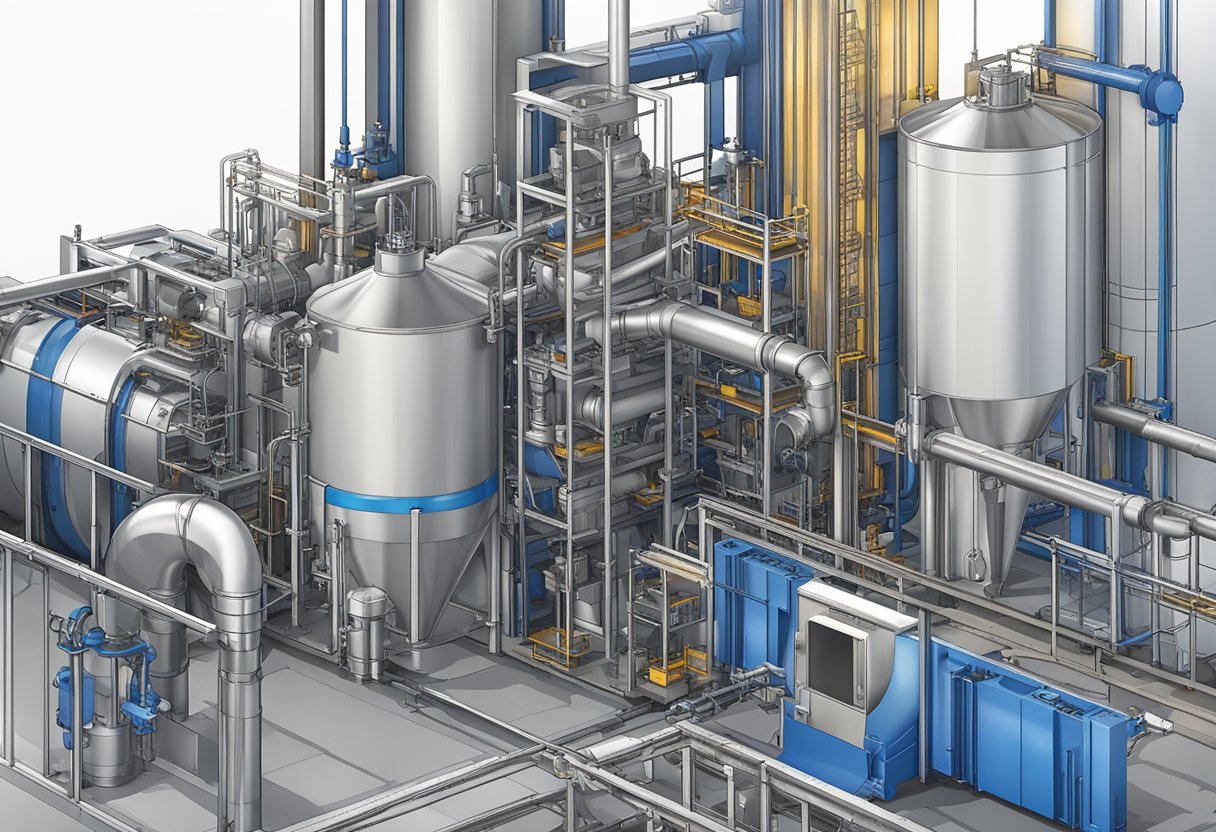Lead Stabilizer in PVC: Understanding Its Role in PVC Manufacturing
19/01/2024
Lead stabilizer in pvc are a common additive used in the production of polyvinyl chloride (PVC) products. PVC is a widely used material in the construction industry due to its durability, versatility, and low cost. However, PVC is inherently unstable and prone to degradation when exposed to heat and light. Lead stabilizers are added to PVC to improve its stability and prevent degradation over time.

Lead stabilizers have been used in lead stabilizer in pvc production for decades, but concerns have been raised about their potential health and environmental impacts. Lead is a toxic heavy metal that can accumulate in the body and cause a range of health problems, including developmental and neurological issues. In addition, lead can leach out of PVC products over time and contaminate the environment. As a result, there has been a push to reduce or eliminate the use of lead stabilizers in PVC production.
Overview of Lead Stabilizers

Lead stabilizers are one of the most commonly used additives in the production of polyvinyl chloride (PVC) products. They are used to improve the processing and performance of PVC by preventing the degradation of the material due to heat, light, and other environmental factors. This section provides an overview of lead stabilizers, including their role in PVC, the types of lead stabilizers, and their historical context.
Role in PVC
Lead stabilizers play a crucial role in PVC production by preventing the degradation of the material during processing and use. PVC is a thermoplastic material that can easily degrade when exposed to heat, light, and other environmental factors. Lead stabilizers act as heat stabilizers, protecting PVC from thermal degradation during processing and use. They also act as light stabilizers, protecting PVC from degradation due to exposure to ultraviolet (UV) light.
Types of Lead Stabilizers
There are several types of lead stabilizers that are commonly used in PBT production. The most commonly used types include lead-based stabilizers, organic-based stabilizers, and mixed-metal stabilizers. Lead-based stabilizers are the most widely used and include lead salts of fatty acids, lead stearate, and lead sulfate. Organic-based stabilizers include epoxidized soybean oil, and mixed-metal stabilizers include lead-calcium and lead-tin stabilizers.
Historical Context
Lead stabilizers have been used in PVC production since the 1950s. They were initially introduced as a replacement for the toxic and unstable tin-based stabilizers that were commonly used at the time. Lead stabilizers quickly became the preferred choice due to their effectiveness, stability, and low cost. However, concerns have been raised about the potential health and environmental risks associated with the use of lead stabilizers. As a result, there has been a shift towards the use of alternative stabilizers that are less toxic and more environmentally friendly.
Chemical Composition

Lead Compounds Used
Lead stabilizers are a type of additive used in the manufacturing of polyvinyl chloride (PVC) products. These stabilizers are compounds that contain lead, which is added to PVC to improve its durability, flexibility, and resistance to heat and light. The most commonly used lead compounds in PVC stabilizers are lead carbonate, lead sulfate, and lead oxide.
Lead carbonate is a white powder that is used as a pigment and as a stabilizer in PVC products. It is a basic lead carbonate that is produced by reacting lead acetate with sodium carbonate. Lead sulfate is a white crystalline powder that is produced by reacting lead oxide with sulfuric acid. It is used as a stabilizer in PVC products that are exposed to high temperatures. Lead oxide is a yellow or reddish powder that is produced by heating lead in air. It is used as a stabilizer in PVC products that are exposed to sunlight.
Additives in Lead Stabilizers
In addition to lead compounds, lead stabilizers also contain other additives that improve their performance and stability. These additives include lubricants, antioxidants, and processing aids. Lubricants are added to lead stabilizers to improve their flow properties and reduce friction during processing. Antioxidants are added to lead stabilizers to prevent them from degrading over time. Processing aids are added to lead stabilizers to improve their processing characteristics and reduce their cost.
Lead stabilizers are widely used in the manufacturing of PVC products, including pipes, window frames, and electrical cables. While lead stabilizers have been shown to improve the performance and durability of PVC products, they have also been linked to health and environmental concerns. As a result, there has been a growing interest in developing alternative stabilizers that are less toxic and more environmentally friendly.
Manufacturing Process

Production Techniques
The production of lead stabilizers in lead stabilizer in pvc involves the use of various techniques, including precipitation, fusion, and blending. The precipitation method involves the addition of lead salts to a solution of PVC, which results in the formation of lead particles. The fusion method involves the melting of lead oxide, which is then mixed with PVC resin. The blending method involves the mixing of lead stabilizers with PVC resin in a dry blending process.
The choice of production technique depends on the specific application of the PVC product and the desired properties of the lead stabilizer. The precipitation method is preferred for products that require high levels of purity, while the fusion method is preferred for products that require high levels of heat stability.
Quality Control
Quality control is an essential aspect of the manufacturing process for lead stabilizers in PVC. The quality of the final product depends on the quality of the raw materials used and the production process. Quality control measures include the testing of raw materials for impurities, the monitoring of the production process for consistency, and the testing of the final product for quality and performance.
The quality control process ensures that the lead stabilizers are of the highest quality and meet the required specifications for their intended use. This is important to ensure that the PVC products are safe, reliable, and meet the expectations of customers.
In summary, the manufacturing process for lead stabilizers in lead stabilizer in pvc involves the use of various production techniques, including precipitation, fusion, and blending. Quality control is an essential aspect of the process to ensure that the final product is of the highest quality and meets the required specifications.
Properties and Performance
Thermal Stability
Lead stabilizers are known for their excellent thermal stability in PVC. They are able to withstand high temperatures without degrading or breaking down, making them ideal for use in applications where heat resistance is required. This thermal stability is due to the high melting point of lead stabilizers, which allows them to maintain their structural integrity even at high temperatures.
Physical Properties
Lead stabilizers also provide a number of physical properties that make them well-suited for use in PVC. They have a high density, which gives lead stabilizer in pvc products a solid and durable feel. They are also highly resistant to water, chemicals, and UV radiation, which helps to extend the lifespan of PVC products.
In addition, lead stabilizers offer excellent processing properties, making them easy to work with during the manufacturing process. They have a low melt viscosity, which allows for easy mixing and blending with other materials. They also have good lubricating properties, which help to reduce friction and wear on processing equipment.
Overall, lead stabilizers are an effective and reliable choice for use in PVC products. Their thermal stability and physical properties make them well-suited for a wide range of applications, from building and construction to automotive and electrical.
Applications of Lead Stabilizers
Lead stabilizers are widely used in the production of PVC products due to their excellent heat stability, weather resistance, and electrical insulation properties. Here are some of the main applications of lead stabilizers:
PVC Piping
Lead stabilizers are commonly used in the production of PVC pipes due to their excellent heat stability and weather resistance. PVC pipes are widely used in construction, plumbing, and other applications due to their low cost, durability, and ease of installation. Lead stabilizers help to ensure that PVC pipes can withstand high temperatures and harsh weather conditions without degrading or losing their structural integrity.
Cable Sheathing
Lead stabilizers are also used in the production of PVC cable sheathing due to their excellent electrical insulation properties. PVC cable sheathing is commonly used in electrical wiring and other applications where electrical insulation is required. Lead stabilizers help to ensure that PVC cable sheathing can provide reliable and long-lasting electrical insulation, even in harsh environments.
Profiles and Fittings
Lead stabilizers are also used in the production of PVC profiles and fittings, such as window frames, door frames, and other building materials. PVC profiles and fittings are widely used in construction due to their low cost, durability, and ease of installation. Lead stabilizers help to ensure that PVC profiles and fittings can withstand high temperatures and harsh weather conditions without degrading or losing their structural integrity.
In conclusion, lead stabilizers are an important component in the production of PVC products due to their excellent heat stability, weather resistance, and electrical insulation properties. PVC products are widely used in construction, plumbing, electrical wiring, and other applications due to their low cost, durability, and ease of installation. Lead stabilizers help to ensure that PVC products can provide reliable and long-lasting performance, even in harsh environments.
Health and Environmental Impact
Toxicity Concerns
The use of lead stabilizers in PVC has been a topic of concern due to the potential health risks associated with lead exposure. Lead is a toxic heavy metal that can cause damage to the nervous system, kidneys, and reproductive system. It is particularly harmful to children, who are more susceptible to lead poisoning than adults.
Studies have shown that lead can leach out of PVC products over time, especially in hot and acidic environments. This can lead to exposure through inhalation, ingestion, or skin contact. While the amount of lead that can be released from PVC products is generally low, it is still important to take precautions to minimize exposure.
To mitigate the risks associated with lead stabilizers in PVC, many manufacturers have switched to alternative stabilizers such as calcium-zinc or tin-based stabilizers. These alternatives have been shown to be effective in maintaining the properties of PVC while reducing the potential health risks.
Regulatory Standards
In response to concerns about the health and environmental impact of lead stabilizers in PVC, many countries have implemented regulations to limit their use. In the European Union, for example, PVC products intended for use in toys must not contain more than 0.1% lead by weight.
In the United States, the Consumer Product Safety Improvement Act (CPSIA) limits the amount of lead that can be present in children’s products to 100 parts per million (ppm). This includes PVC products such as toys, clothing, and school supplies.
While these regulations have helped to reduce the potential health risks associated with lead stabilizers in PVC, it is still important for consumers to be aware of the materials used in the products they purchase. By choosing PVC products that are free of lead stabilizers, consumers can help to protect their health and the environment.
Alternatives to Lead Stabilizers
PVC is a widely used material due to its durability, versatility, and low cost. However, the use of lead-based stabilizers in PVC has raised concerns about the environmental and health impacts of lead exposure. To address these concerns, manufacturers have developed alternative stabilizers that are safer and more environmentally friendly.
Calcium-Based Stabilizers
Calcium-based stabilizers are a popular alternative to lead stabilizers in PVC. They are non-toxic and have a low environmental impact. Calcium-zinc stabilizers, for example, are a combination of calcium and zinc that provide good heat stability and weatherability to PVC. They are also compatible with other additives commonly used in PVC, such as plasticizers and lubricants.
Organotin Stabilizers
Organotin stabilizers are another alternative to lead stabilizers in PVC. They are effective in providing heat stability and weather resistance to PVC. However, some organotin stabilizers have been found to be toxic and harmful to the environment. Manufacturers have developed new organotin stabilizers that are less toxic and more environmentally friendly.
Barium-Zinc Stabilizers
Barium-zinc stabilizers are a newer alternative to lead stabilizers in PVC. They are non-toxic and have a low environmental impact. They provide good heat stability and weatherability to PVC. However, they are not as widely used as calcium-based or organotin stabilizers due to their higher cost.
In conclusion, there are several alternatives to lead stabilizers in PVC that are safer and more environmentally friendly. Each alternative has its own advantages and disadvantages, and manufacturers must carefully choose the appropriate stabilizer for their specific application.
Market Trends
Global Demand
The global demand for lead stabilizers in PVC has been increasing steadily over the years. This is mainly due to the growing demand for PVC products in various industries such as construction, automotive, and packaging. According to a recent report by Grand View Research, the global PVC stabilizer market is expected to reach USD 4.3 billion by 2025, growing at a CAGR of 6.9% from 2019 to 2025. The report also highlights the increasing demand for lead-based stabilizers in the Asia Pacific region, especially in countries like China and India.
Innovations and Developments
In recent years, there have been several innovations and developments in the lead stabilizer market. Manufacturers are now focusing on developing lead stabilizers that are more environment-friendly and comply with various regulations such as REACH and RoHS. For instance, some manufacturers are now producing lead stabilizers that are based on renewable resources such as vegetable oils. These stabilizers not only provide good thermal stability to PVC but also have a lower environmental impact.
Another trend that has been observed in the market is the development of lead-free stabilizers. These stabilizers are based on alternative metals such as calcium, zinc, and tin. They provide similar performance as lead stabilizers but have a lower toxicity and environmental impact. Several manufacturers are now investing in the development of lead-free stabilizers to cater to the growing demand for environment-friendly PVC products.
Overall, the market trends for lead stabilizers in PVC are positive, with increasing demand and innovations in the market. As regulations become stricter and consumers become more aware of the environmental impact of PVC products, manufacturers will need to continue to innovate and develop more sustainable solutions.
Recycling and Disposal
Recycling Processes
PVC products containing lead stabilizers can be recycled using a variety of methods. Mechanical recycling is the most common method, which involves grinding the PVC material into small particles and then melting and reforming it into new products. This process can be repeated multiple times without significant loss of quality.
Chemical recycling is another method that can be used to recycle PVC products containing lead stabilizers. This method involves breaking down the PVC material into its chemical components using solvents or other chemicals. The resulting chemicals can then be used to create new PVC products.
Disposal Methods
If PVC products containing lead stabilizers cannot be recycled, they should be disposed of properly to prevent harm to the environment. Landfills are a common disposal method, but it is important to ensure that the landfill is properly designed and operated to prevent leaching of lead and other harmful chemicals into the surrounding soil and water.
Incineration is another disposal method that can be used for PVC products containing lead stabilizers. However, this method can release harmful pollutants into the air if not properly controlled.
Overall, it is important to consider the environmental impact of PVC products containing lead stabilizers and to choose recycling or disposal methods that minimize harm to the environment.
Future of Lead Stabilizers
Regulations Impact
The use of lead stabilizers in PVC has been a topic of concern due to the potential environmental and health hazards associated with lead. As a result, many countries have implemented regulations to limit or ban the use of lead stabilizers in PVC products. For instance, the European Union has restricted the use of lead stabilizers in PVC products since 2015, while the United States has set limits on the amount of lead that can be used in PVC products.
These regulations have had a significant impact on the PVC industry, with many manufacturers transitioning to alternative stabilizers such as calcium-zinc and tin-based stabilizers. However, the use of these alternative stabilizers has also raised concerns, with some studies suggesting that they may have their own environmental and health risks.
Technological Advancements
As the demand for PVC products continues to grow, the industry is investing in research and development to find new and innovative ways to stabilize PVC without the use of lead. One promising area of research is the use of nanotechnology, which involves the use of nanoparticles to enhance the properties of PVC.
Researchers have found that nanoparticles such as titanium dioxide and zinc oxide can be used as effective stabilizers for PVC, providing comparable or even better performance than lead stabilizers. Additionally, these nanoparticles have low toxicity and are considered safe for the environment.
Another area of research is the development of bio-based stabilizers, which are derived from renewable resources such as vegetable oils and animal fats. These stabilizers have shown promising results in laboratory tests and could provide a sustainable alternative to lead stabilizers.
Overall, the future of lead stabilizers in PVC is uncertain, with many countries implementing regulations to limit or ban their use. However, the industry is investing in research and development to find new and innovative ways to stabilize PVC without the use of lead, which could provide a sustainable and safe alternative for the future.
Conclusion
In conclusion, lead stabilizers have been widely used in PVC production for many years due to their effectiveness in enhancing the material’s properties. However, their negative impact on human health and the environment cannot be ignored.
The use of lead stabilizers in PVC has been linked to various health issues, including neurological damage, developmental delays, and even cancer. Furthermore, lead stabilizers can contaminate the environment, leading to soil and water pollution.
Fortunately, there are alternative stabilizers available that are both effective and safer for human health and the environment. Calcium-zinc stabilizers, for example, have been shown to be a suitable replacement for lead stabilizers in many PVC applications.
It is important for lead stabilizer in pvc manufacturers to consider the potential risks associated with lead stabilizers and to take steps to transition to safer alternatives. By doing so, they can help protect the health of their workers and consumers, as well as the environment.




